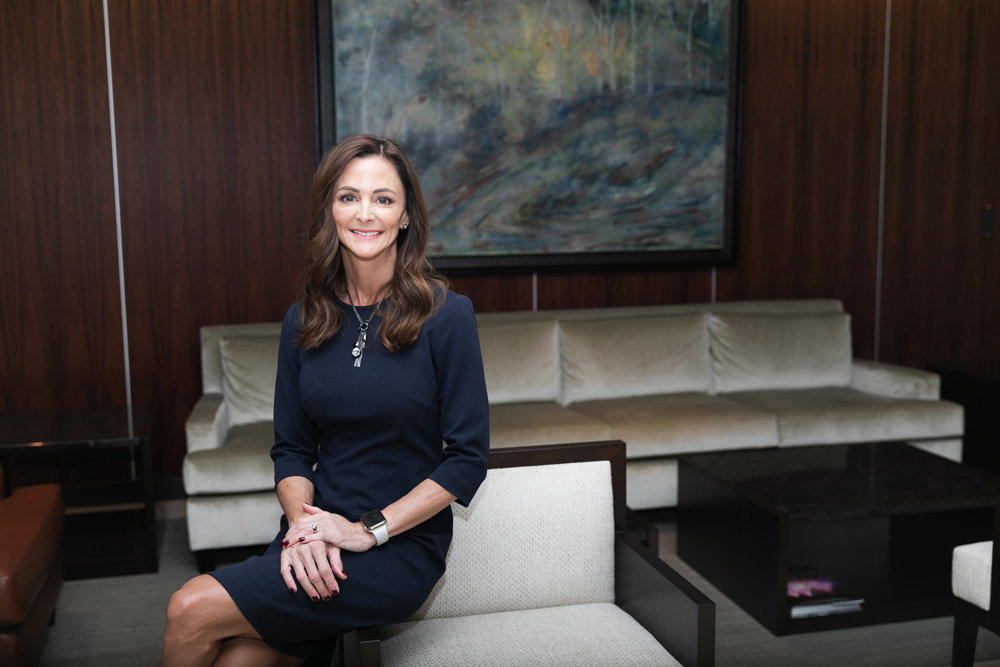YOUR BUSINESS AUTHORITY
Springfield, MO
YOUR BUSINESS AUTHORITY
Springfield, MO

How is the labor shortage influencing wages and benefits, and how is BKD shifting to be competitive?
It’s an ultracompetitive environment right now. I don’t think we really forecast seeing that. In our industry in particular, as we were going through the pandemic, we didn’t have reductions in force. We were very transparent: If we don’t perform well, we may have to go down that route, but we’re going to preserve everybody’s compensation. Fortunately, we were able to be very productive throughout the pandemic. But in our industry, other firms didn’t take that path. They cut bonuses, they cut compensation, they did mass layoffs in anticipation of what could come. That added onto the competitiveness, the market pressures that we’ve seen across the board. The workforce, I think as a result of the pandemic, has kind of taken a step back and said I really need to rethink what’s best for me and my family and what’s best for my career. Some people are just leaving the workforce altogether ... or people just completely changing professions. Some of the things that we’ve really been responsive to is really listening to our Employee Value Proposition Task Force, as well as understanding what are the market pressures and evaluating our compensation, our benefits, our wellness programs, flexibility programs.
The Pew Research Center reports as many as 71% of Americans worked from home during the pandemic. Hybrid is now a common word in workplaces. I don’t historically connect flexibility to BKD, but has that shifted?
I think that’s a fair assessment. I feel like the pandemic has – as tragic as it is – it really was an opportunity for us to make lemonade from lemons. Pre-pandemic, we were definitely a very conservative organization, and in some ways we still value this. People came into the office, they worked the full day and then they went home, unless you’re out serving client needs. We’re proud of that apprenticeship model. You fast-forward from that environment to 100% remote. What we learned was we were highly productive; we were highly responsive. We knew that we would not be able to come back to what we were before. A couple of things that we noticed as a result of going remote: We were highly successful because we had such strong relationships going into the pandemic as a result of being together. However, we also saw that our newer associates that we brought into the firm were providing feedback to us that they weren’t receiving the coaching that they needed. Coaches were saying they’re not developing at the same pace. That’s a key component to our culture. We landed on a place where we feel we’ve struck the right balance. We need to have our workforce in the office on a regular basis, but also giving them the flexibility to work from home. We wanted people to flex that time that met their personal needs, but also met the organizational needs to provide collaboration and feedback.
Another shift sparked by the pandemic is the number of people seeking mental health care. A Kaiser Health News study found employers are responding: 16% are adding new mental health care resources and 31% are expanding resources. How has usage of these services shifted at BKD?
Most organizations adopted more telemedicine and telehealth options, and we were no different in that because we wanted to make sure that our workforce was able to get the health care that they needed, even when they couldn’t go to a physician’s site. We did see a spike in our behavioral health care claims, as well as our prescriptions affiliated with higher anxiety and depression, which is no surprise to any of us. As a result of that, we looked at ways that we could enhance our wellness benefits through enhanced (employee assistance programs).
The same report from Kaiser found employee-sponsored health insurance premiums went up 4% in 2021, but in the past decade have increased 47%, at higher levels than wages and inflation. What are you seeing for 2022 costs?
We’re a self-funded plan, so we set our premiums based on the utilization of the plan. It’s hard to forecast when you’re in the middle of a pandemic. What we saw was our health care claims tremendously decreased from a result of people just couldn’t get to the doctor. That potentially can have a long-term effect if you’re deferring maintenance visits. But we also had, if there were individuals on our plan who contracted COVID, those are pretty costly. Now we’re coming out of the pandemic, the deferred maintenance visits are starting to happen again. We did see our claims go up. We’re pretty pleased where we ended up. Our (preferred provider organization) plan is going to increase by 4% and our high-deductible health plan is increasing by 2%. The smaller increases are definitely a helpful thing for our workforce. We have seen, across the board, historic increases in health care premiums. I think we’re fortunate that we’ve been able to withstand that.
Julie Cummings can be reached at jcummings@bkd.com.
Utah-based gourmet cookie chain Crumbl Cookies opened its first Springfield shop; interior design business Branson Upstaging LLC relocated; and Lauren Ashley Dance Center LLC added a second location.
Updated: Systematic Savings Bank to be acquired in $14M deal
Warby Parker store planned in Springfield
Former CoxHealth colleagues starting communications firm
Former Wentzville superintendent to get $1M in contract buyout
STL construction firm buys KC company
NPR editor resigns after writing piece critical of organization
Survey finds increase in average salary Americans willing to take